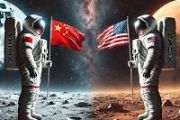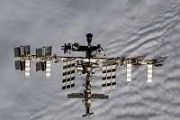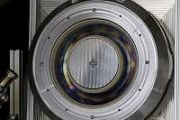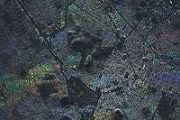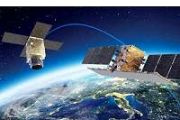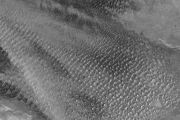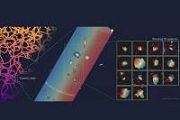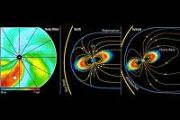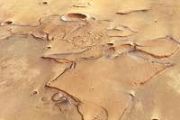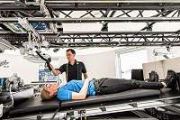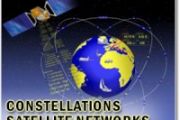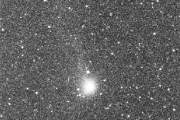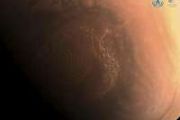
Copernical Team
Warped planet forming discs challenge long held models of planetary birth
 Scientists studying the origins of planetary systems have found that protoplanetary discs are often warped, overturning the traditional view of smooth, flat discs. The findings, published in the Astrophysical Journal Letters, show that these subtle tilts can significantly influence how planets grow and establish orbits.
The research team, using the Atacama Large Millimetre/submillimetre Ar
Scientists studying the origins of planetary systems have found that protoplanetary discs are often warped, overturning the traditional view of smooth, flat discs. The findings, published in the Astrophysical Journal Letters, show that these subtle tilts can significantly influence how planets grow and establish orbits.
The research team, using the Atacama Large Millimetre/submillimetre Ar SpaceX expands Starlink network in latest Falcon 9 launch
 Elon Musk's SpaceX launched 28 more satellites into low-Earth orbit on Sunday as the company continues to build out its constellation.
The satellites were launched by a Falcon 9 rocket at 7:49 a.m. local time from Space Launch Complex 40 at the Cape Canaveral Space Force Station in Florida, the company said in a statement.
After separation, the rocket's first stage booster, numbe
Elon Musk's SpaceX launched 28 more satellites into low-Earth orbit on Sunday as the company continues to build out its constellation.
The satellites were launched by a Falcon 9 rocket at 7:49 a.m. local time from Space Launch Complex 40 at the Cape Canaveral Space Force Station in Florida, the company said in a statement.
After separation, the rocket's first stage booster, numbe Over Soroya Ridge and onward
 Perseverance has continued exploring beyond the rim of Jezero crater, spending time last week at Parnasset conducting a mini-campaign on aeolian bedforms. After wrapping up that work, three separate drives brought Perseverance further southeast to an outcrop named Soroya.
Soroya was first picked out from orbital images as a target of interest because, as can be seen in the above image, it
Perseverance has continued exploring beyond the rim of Jezero crater, spending time last week at Parnasset conducting a mini-campaign on aeolian bedforms. After wrapping up that work, three separate drives brought Perseverance further southeast to an outcrop named Soroya.
Soroya was first picked out from orbital images as a target of interest because, as can be seen in the above image, it Double trouble: Solar Orbiter traces superfast electrons back to Sun

The European Space Agency-led Solar Orbiter mission has split the flood of energetic particles flung out into space from the Sun into two groups, tracing each back to a different kind of outburst from our star.
Webb observations of interstellar comet 3I/ATLAS
 Image:
Webb observations of interstellar comet 3I/ATLAS
Image:
Webb observations of interstellar comet 3I/ATLAS Nullspace secures 2.5M seed funding to advance RF and quantum simulation software
 Nullspace, a deep tech company creating next-generation electromagnetic simulation software, has raised $2.5 million in seed financing. The round was led by Fathom Fund with participation from Golden Seeds LLC and several strategic angel investors. The capital will support expansion of the engineering team, faster product development, and commercial scaling across aerospace, defense, quantum com
Nullspace, a deep tech company creating next-generation electromagnetic simulation software, has raised $2.5 million in seed financing. The round was led by Fathom Fund with participation from Golden Seeds LLC and several strategic angel investors. The capital will support expansion of the engineering team, faster product development, and commercial scaling across aerospace, defense, quantum com Autonomous robot lab accelerates search for advanced quantum dots
JWST observes planetary building blocks in Butterfly Nebula
 The James Webb Space Telescope has helped researchers learn new information about how the Earth may have been formed as it gives a deeper look into the Butterfly Nebula.
The telescope saw the creation of tiny planetary building blocks around a dead star, as it saw cosmic dust particles that create planets around young stars forming for the first time.
"For years, scientists have
The James Webb Space Telescope has helped researchers learn new information about how the Earth may have been formed as it gives a deeper look into the Butterfly Nebula.
The telescope saw the creation of tiny planetary building blocks around a dead star, as it saw cosmic dust particles that create planets around young stars forming for the first time.
"For years, scientists have SpaceX sets record with 30th Falcon 9 spaceflight
 SpaceX set a record with its 30th flight featuring Falcon 9 booster, B1067 on Thursday from the Kennedy Space Center.
The Starlink mission 10-11 placed another 28 Starlink satellites into low Earth orbit; more than 1,800 of these satellites have been launched across 74 missions in 2025.
The booster landed its 30th landing coming down at sea on the SpaceX drone ship "a Shortfall o
SpaceX set a record with its 30th flight featuring Falcon 9 booster, B1067 on Thursday from the Kennedy Space Center.
The Starlink mission 10-11 placed another 28 Starlink satellites into low Earth orbit; more than 1,800 of these satellites have been launched across 74 missions in 2025.
The booster landed its 30th landing coming down at sea on the SpaceX drone ship "a Shortfall o Week in images: 25-29 August 2025

Week in images: 25-29 August 2025
Discover our week through the lens






